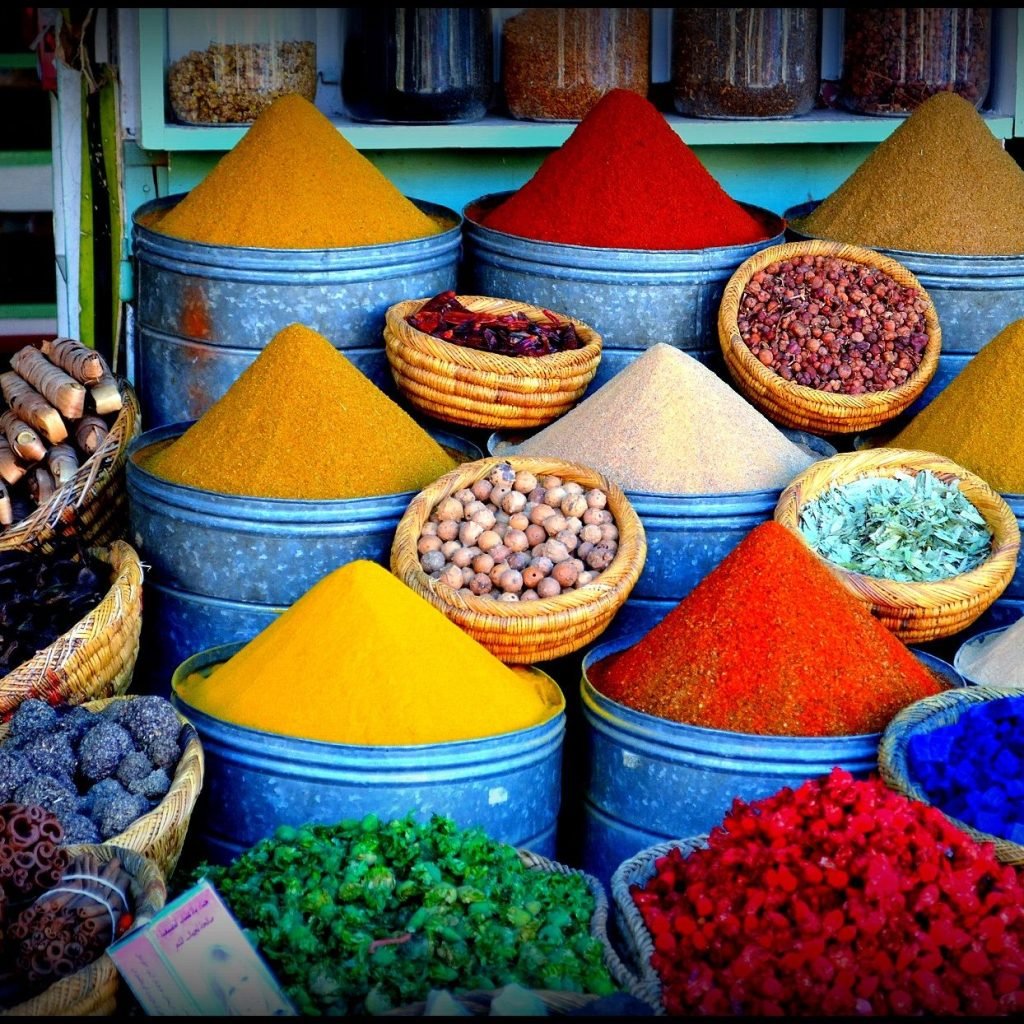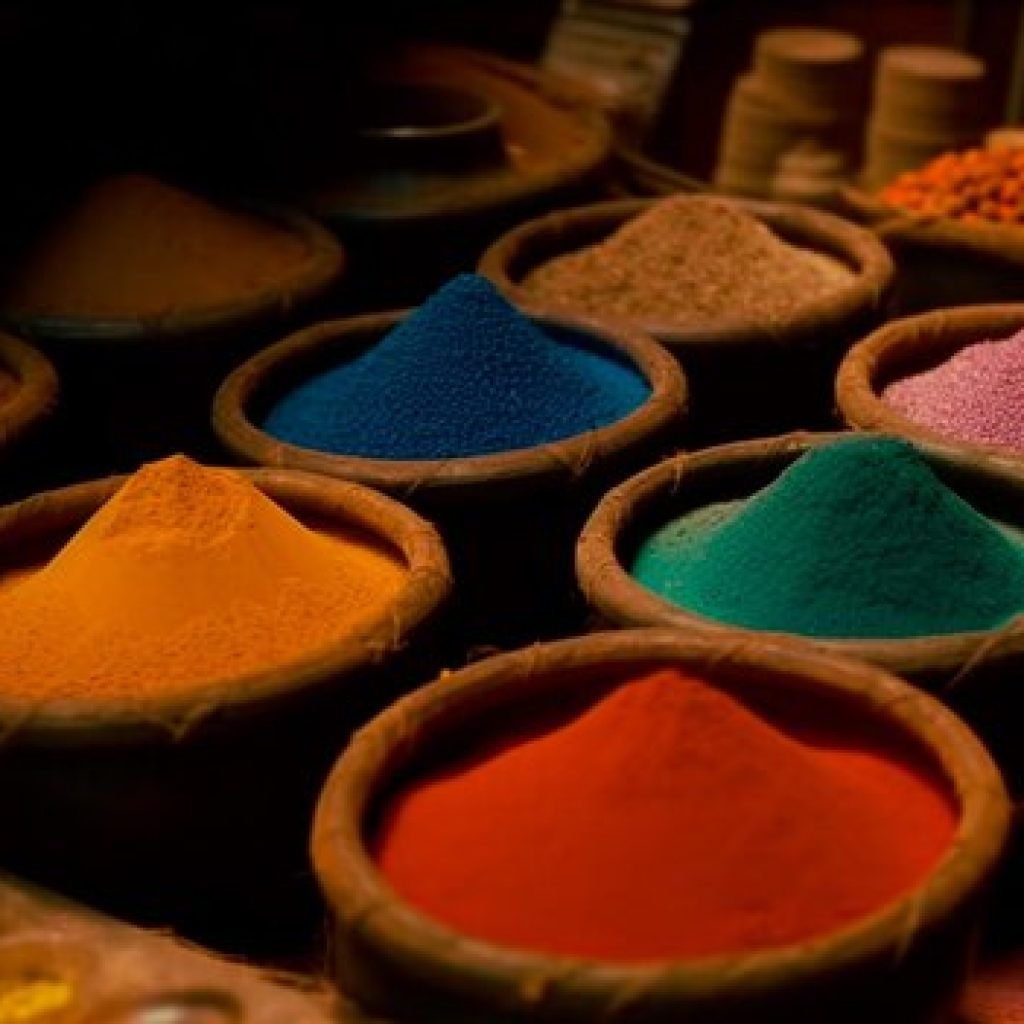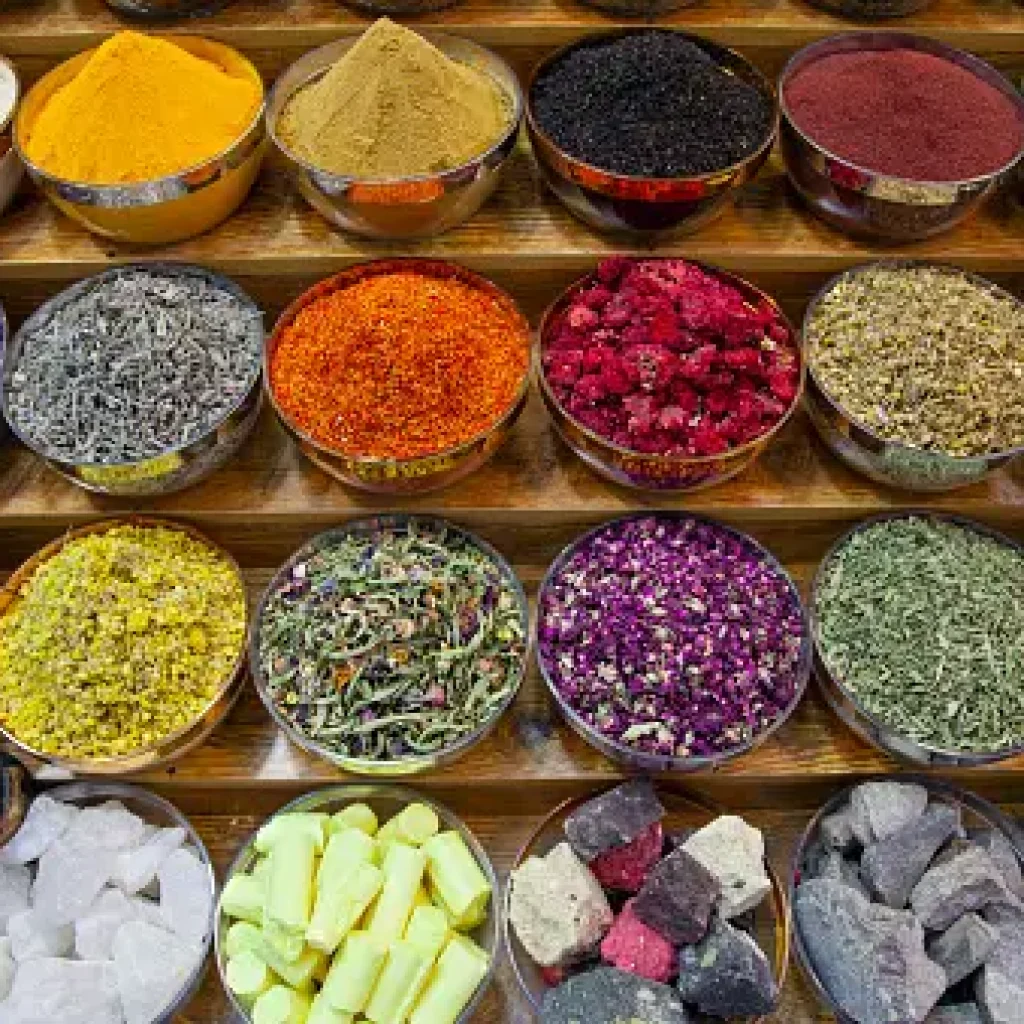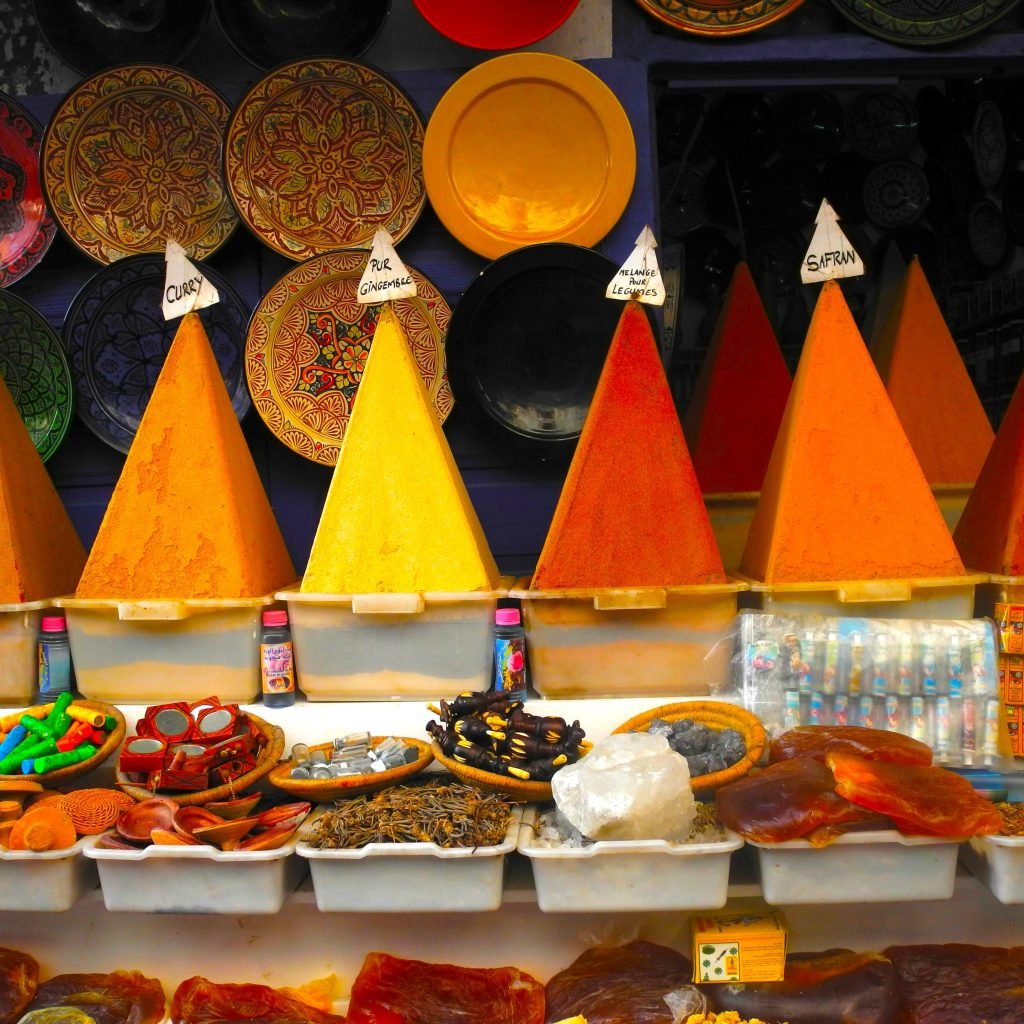



There’s something deeply evocative about stepping into a Moroccan souk. The air is thick with the scent of exotic spices—earthy cumin, sweet cinnamon, fiery paprika, and delicate saffron. The colors are just as intoxicating: rich ochres, deep reds, sun-drenched yellows. For centuries, Morocco has been a crossroads of culture, trade, and flavor, and nowhere is that legacy more alive than in its spice markets.
At Indigo Expedition, we believe that food is one of the most powerful ways to connect with a culture. And in Morocco, spices are not just culinary ingredients—they are storytellers. Each spice carries with it a narrative of ancient caravans crossing the Sahara, of Berber traditions, of Arab, Moorish, and French influences blended together in kitchens from Marrakesh to Fez.
Let’s embark on a sensory expedition through the spices that define Moroccan cuisine, and explore how these flavors shape the identity of a nation.
The Heart of Moroccan Flavor
Walk into any Moroccan home, and you’ll likely be greeted with a dish that feels both familiar and completely new. Moroccan cuisine is a fusion—complex yet comforting. At its core are a few essential spices that appear in nearly every traditional recipe.
Cumin is perhaps the most widely used spice in Morocco. Its warm, earthy depth is foundational in tagines, lentil stews, and couscous. It’s often paired with coriander, which adds a citrusy brightness to balance the richness.
Cinnamon, used both in sweet and savory dishes, adds a soft sweetness to meat dishes and is essential in the famous pastilla—a flaky pie filled with pigeon or chicken, almonds, and spices, dusted with powdered sugar.
Then there’s turmeric, which imparts a golden color and subtle bitterness, often combined with ginger and paprika for layered flavor profiles. And of course, saffron, one of the most prized spices in the world, grown in the Taliouine region of Morocco. Its floral notes and golden hue make it a luxurious addition to both rice and broth-based dishes.
Ras el Hanout: The Crown Jewel
If Moroccan cuisine had a signature spice blend, it would be ras el hanout. The name translates to “head of the shop,” indicating that it’s the best a spice merchant has to offer. There is no fixed recipe—each blend is unique—but it typically includes a combination of 10 to 30 spices: cardamom, clove, cinnamon, nutmeg, mace, allspice, dry ginger, chili peppers, coriander, and turmeric, among others.
Ras el hanout isn’t just a flavor—it’s an experience. It’s used to marinate meats, flavor couscous, and add depth to vegetable stews. Each spoonful tells a story of trade routes, culinary tradition, and the Moroccan passion for balance in flavor.
Spices as Cultural Heritage
The use of spices in Morocco is not just about taste—it reflects centuries of cultural exchange. Situated at the intersection of Africa, Europe, and the Middle East, Morocco was a hub of the ancient spice trade. Traders from sub-Saharan Africa, Arab nations, and the Mediterranean all brought with them new ingredients and culinary ideas.
Spices became more than just commodities—they were woven into daily life, medicine, rituals, and hospitality. To offer a guest tea infused with fresh mint and perhaps a pinch of absinthe (sheeba) is a sign of warmth and generosity. To prepare a spice-laden meal for a holiday or family gathering is to participate in a deeply-rooted tradition.
Even today, Moroccan spice markets—especially those in Marrakesh’s Jemaa el-Fnaa or Fez’s Medina—are alive with this cultural energy. Vendors call out their offerings, scoop mountains of colorful powders into paper cones, and invite travelers to smell, taste, and learn.
Cooking with Moroccan Spices
For travelers returning from Morocco, the aroma of a particular spice blend can instantly transport them back to a bustling souk or a candlelit dinner in the Atlas Mountains. Fortunately, Moroccan spices are increasingly available worldwide, and recreating Moroccan dishes at home can be both simple and deeply rewarding.
A classic chicken tagine with preserved lemons and olives relies on ginger, saffron, turmeric, and black pepper for its complex flavor. Add green olives and thin slices of preserved lemon rind, and you have a dish that perfectly balances salt, acid, and spice.
Harira, a traditional Moroccan soup made during Ramadan, blends cinnamon, ginger, turmeric, and fresh herbs in a tomato-based broth with lentils and chickpeas. It’s both nourishing and fragrant, a perfect example of how spices turn simple ingredients into something memorable.
For a touch of heat, Moroccan cuisine often incorporates harissa, a North African chili paste made with smoked peppers, garlic, and spices. While not native to Morocco alone, its influence is felt across many Moroccan kitchens, often used as a condiment or marinade.
Spice as Storytelling
At Indigo Expedition, we explore culture not just through geography but through the senses. The story of Moroccan spices is one of movement—across borders, generations, and identities. It’s about how food connects people, preserves heritage, and sparks curiosity.
Each spoonful of ras el hanout, each sprinkle of cinnamon, is a link in a long chain of human connection—from Berber farmers tending saffron crocuses in Taliouine, to chefs in Marrakesh perfecting a family recipe, to home cooks around the world discovering Moroccan cuisine for the first time.
To explore Morocco through its spices is to see beyond the plate. It’s to understand the rituals, the histories, and the everyday moments that give life its flavor.
Bringing Moroccan Flavors Into Your Home
If you’re inspired to bring a taste of Morocco into your kitchen, here are a few tips:
Start with a spice blend: Purchase a good-quality ras el hanout or make your own. It’s incredibly versatile.
- Use spices mindfully: Moroccan cooking is all about balance. A little goes a long way, so layer flavors gradually.
- Incorporate preserved ingredients: Preserved lemons, olives, and dried fruits are common in Moroccan dishes and pair beautifully with the spices.
- Cook slowly: Tagines and stews often benefit from long, slow cooking that allows the spices to infuse every ingredient.
- Stay curious: Experiment with dishes like zaalouk (eggplant salad), msemen (flatbread), or Moroccan mint tea to deepen your culinary journey.
Conclusion: The Spice of Connection
Morocco is more than a destination—it’s a sensory immersion. Its spices offer not just flavor, but a pathway into its culture, history, and soul. At Indigo Expedition, we celebrate these rich connections, believing that food is one of the most authentic ways to explore the world.
So whether you’re wandering the alleys of a Moroccan medina or simply simmering a tagine in your own kitchen, remember: each spice you taste is part of a larger story—a global expedition of flavor, memory, and meaning.


0 Comment